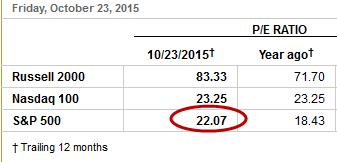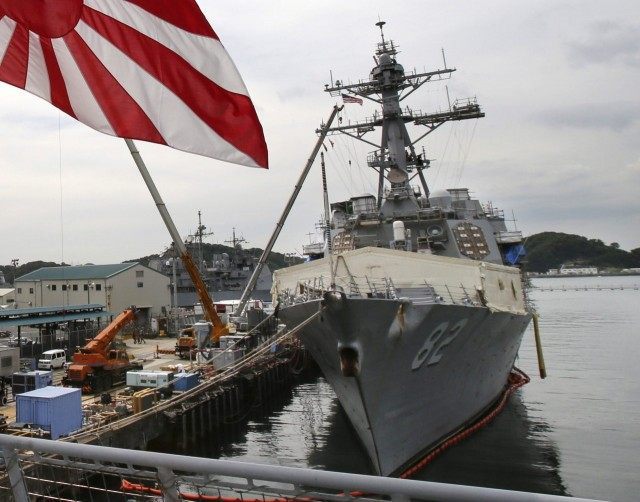This morning’s key headlines from GenerationalDynamics.com
- US Navy to challenge China in the South China Sea today
- What was the purpose of Russia’s Caspian Sea cruise missile attack on Syria?
- Insurers taking increasingly risky investment bets
US Navy to challenge China in the South China Sea today

US Navy destroyer USS Lassen, to be sent into South China Sea near China’s man-made islands (Reuters)
We recently reported on plans for the US Navy to send a vessel into the South China Sea close to the man-made island chain that China has been building, apparently to provide a platform for a large military base. ( “16-Oct-15 World View — China and US poised for South China Sea military confrontation”)
There are now reports that the U.S. Navy plans to send the destroyer USS Lassen within 12 nautical miles of artificial islands built by China in the South China Sea within 24 hours. The ship would likely be accompanied by a U.S. Navy P-8A surveillance plane and possibly P-3 surveillance plane.
According to an unnamed Pentagon official: “This is something that will be a regular occurrence, not a one-off event. It’s not something that’s unique to China.”
In the past few weeks since the reports first surfaced, there have been highly nationalistic and belligerent Chinese media reports, such as the following from the Global Times that I quoted in my last article:
Despite the legitimacy of China’s construction work and the public good it can provide, if the US adopts an aggressive approach, it will be a breach of China’s bottom line, and China will not sit idly by.
China has remained calm with self-restraint even in the face of Washington’s escalating provocations, but if the US encroaches on China’s core interests, the Chinese military will stand up and use force to stop it.
However, there have been no such threats coming from China’s Ministry of Defense, suggesting that there will not be an immediate military confrontation after all. However, tensions are sure to increase, as nationalistic anti-American fury is sure to increase in China.
Many people have expressed concern that American would just stand by and do nothing but observe as China annexed regions of the South China Sea belonging to other nations, just as Nato stood by and only observed Russia’s annexation of Ukraine’s Crimean peninsula last year, and just as Britain stood by and only observed as Adolf Hitler annexed part of Czechoslovakia in 1939, leading to World War II. So the fact that the Obama administration is taking this step to stand up to China will come as a surprise to a lot of people, including me.
From the point of view of Generational Dynamics, China and the United States are headed for war anyway, whether America stands up to China in the South China Sea or not. Reuters and CNN and Global Times (Beijing 15-Oct)
What was the purpose of Russia’s Caspian Sea cruise missile attack on Syria?
It has now been almost three weeks since Russia’s president Vladimir Putin ordered the Caspian Sea fleet to launch a volley of 26 cruise missiles at Syria, traveling 1,500 km over the countries of Iran and Iraq to reach their targets in the Syrian cities of Raqqa, Idlib and Aleppo. ( “8-Oct-15 World View — Russia dramatically escalates Syria war launching cruise missiles from Caspian Sea”)
There seems to have been no follow-up from the October 7 Caspian Sea missile attack, and so a number of questions have arisen as to the purpose of the attack, and why the Russians did not simply attack the same targets through airstrikes, or through missiles launched from Russia’s Mediterranean fleet or from the Latakia, Syria, airbase. It seems clear that Russia’s purpose was to send a message. But what message(s) was Russia sending?
Besides the obvious message to the West that Russia’s military is back in the game, there were several other messages:
- In addition to Russia, there are four other nations adjoining the Caspian Sea: Azerbaijan, Iran, Kazakhstan, and Turkmenistan. These five countries have been negotiating for years on the issue of dividing up the Caspian’s offshore waters and seabed while simultaneously developing their own nationalist energy policies. Russia’s clear naval superiority in the Caspian will be a major factor in the negotiations.
- As we have been recently reporting, Russian troops are taking control of Tajikistan’s border with Afghanistan. Russia has been using the threat of jihadists from Afghanistan to convince Central Asian nations to allow Russian troops back on their soil, as part of Vladimir Putin’s apparent effort to reconstruct the Soviet Union through the CIS (Commonwealth of Independent States, formerly of the Soviet Union). The Caspian Sea launch occurred just before a meeting of CIS leaders in Kazakhstan on October 16, at which Central Asian leaders agreed to a Russian-backed military cooperation agreement.
- There is a similar message to countries in the South Caucasus, including Georgia, Armenia and Azerbaijan. Russian media has repeatedly suggested that jihadists fighting in the Syrian conflict could pose a growing threat of religious extremism to these nations, and has used that threat in negotiations over military and commercial agreements.
- Some analysts see it as a marketing opportunity to help Russia sell the Kalibr 3M-14T missiles used in the October 7 attack to potential foreign buyers.
- Others attribute it to vanity: The attack was launched on Vladimir Putin’s 63rd birthday.
The Russian launch from the Caspian Sea has forced civil aviation changes. The Kazakhstan carrier Air Astana announced it was altering the route of its Almaty-Baku flight to reduce the risk of a potential missile-related accident, or a repeat of the shoot-down of Malaysian Airlines Flight 17 over eastern Ukraine in July 2014. The European Aviation Safety Agency (EASA) has issued a warning concerning all flights crossing the airspace above the Caspian Sea, Iran and Iraq. EurasiaNet and Jamestown and Silk Road Reporters
Insurers taking increasingly risky investment bets
As another sign that the financial services organizations are returning to the abusive practices that led to the financial crisis of 2007-8, BlackRock Inc. has found that insurance companies are increasingly making risky investments.
The most serious investment problem facing insurers is the low interest rate environment, led by the near-zero Federal Reserve funds rate, currently at 0.12%. In normal times, insurers invest money in corporate or government bonds, but in the current environment, the yield (interest rate) on these bonds is also close to zero.
According to BlackRock analyst David Lomas:
The mix of divergent central bank policy, bond market liquidity risk, and a heightened regulatory regime, presents the industry with a dilemma. Opportunities exist to protect balance sheet health and maintain challenged business lines, but investors need to quickly get familiar with diversifying portfolios into higher-risk, higher-yield assets, and also closely manage the risks inherent in these new areas.

S&P 500 Price/Earnings ratio at astronomically high 22.07 on October 23 (WSJ)
In other words, many insurers are investing in risky derivatives and exchange-traded funds, in the hope of getting higher yields. In addition, many insurers are investing in stocks, despite the high S&P 500 Price/Earnings ratio. Insurers are incurring exactly the same kinds of risks that led to the last financial crisis.
There is a big irony in this situation. As we said, the biggest investment problem is the low interest rate environment, led by the Fed’s near-zero funds rate. But insurers say that one of their biggest risks is that interest rates may increase, triggering a correction in stock prices, and possibly a recession.
Generational Dynamics predicts that we are headed for a global financial panic and crisis. According to Friday’s Wall Street Journal, the S&P 500 Price/Earnings index (stock valuations index) on Friday morning (October 23) was at an astronomically high 22.07. This is far above the historical average of 14, indicating that the stock market is in a huge bubble that could burst at any time. Generational Dynamics predicts that the P/E ratio will fall to the 5-6 range or lower, which is where it was as recently as 1982, resulting in a Dow Jones Industrial Average of 3000 or lower. Bloomberg and Insurance Asset Risk
KEYS: Generational Dynamics, USS Lassen, China, South China Sea, Ukraine, Crimea, Adolf Hitler, Czechoslovakia, Russia, Caspian Sea, Syria, Raqqa, Idlib, Aleppo, Kalibr 3M-14T, Azerbaijan, Iran, Kazakhstan, Turkmenistan, Tajikistan, Commonwealth of Independent States, CIS, Georgia, Armenia, Azerbaijan, Vladimir Putin, European Aviation Safety Agency, EASA, BlackRock Inc., David Lomas, Price/earnings ratio
Permanent web link to this article
Receive daily World View columns by e-mail

COMMENTS
Please let us know if you're having issues with commenting.